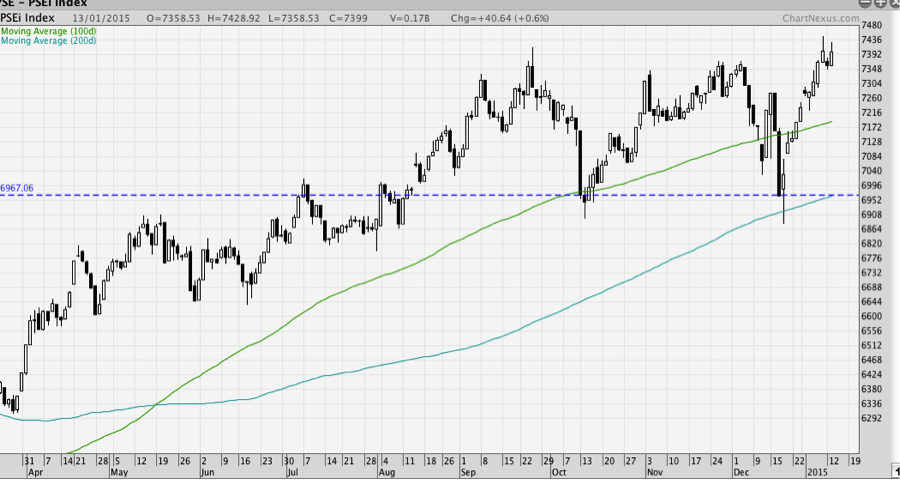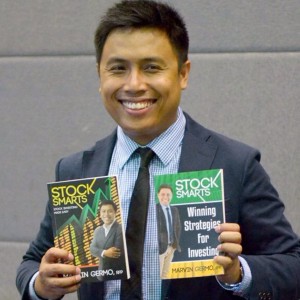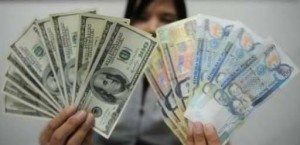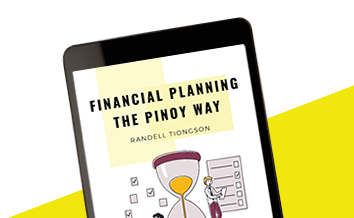2015 Outlook, part 8
By Randell Tiongson on January 21st, 2015
There has been a rise in the interest of Filipinos with regard to stock market investing. Financial advisers often recommend stocks to be in one’s portfolio and for a good reason, it has given the investor good returns for sometime now. However, stocks are also one of the most volatile investments and many have ‘lost their shirt’ in the stock market, so to speak.
Are we seeing a continued bull run in the Philippine Stock Market for 2015? Marvin Germo, one of the country’s most popular stock market enthusiast shares his views on where the market is heading for 2015.
The 2015 Outlook of Marvin Germo
I love watching basketball. I love the part where the underdog, who has been trailing massively in the first 3 quarters start to turn things around and shift things toward their favor. I just love seeing that sight, to see people who have been battered and forgotten move forward and shift from losing to wining.
I believe that this is what is happening in the Philippines. I believe we are surging like never before. The economy may not be perfect and there are things that I think still need to be changed. But like the basketball team I know we are moving up instead of falling down. All the cards are stacking right towards our favor.
What has changed?
1. Our GDP is still strong, relatively higher than most of our peers in region and also as compared to its historic average. The economy was flying prior to Yolanda but it slowed down a bit in 2014 due to its effects of the typhoon. But I believe this year our economy would pick up further. Our GDP is still and will be consumption driven, this means that as more Filipinos spend our economy would grow as a whole.
2. Two years ago we moved from speculative to investment grade but not just that over the past few months we have proven that we can go higher than that as evidenced by more and more upgrades.
3. Inflation is still low, as oil prices continue to drop worldwide, I believe this would further slow down inflation in the country.
4. Interest rates are also low, this means more people are taking loans. More loans allow other sectors in the country to grow. In spite of more people taking loans our Non Performing Loans ratio is still relatively low, this means that people are paying their loans and not defaulting on them. As interest rates are low, this also means more liquidity in the market. It shows that more people would be taking more risks to get more gains. This is good for people involved in stocks and equity funds.
5. We are the top 23rd in the world in gold reserves and top 25th in US dollar reserves beating other 1st world countries.
6. Our unemployment rate is relatively lower, meaning more jobs are being created for our countrymen but aside from that we are seeing also more OFW remittances that help energize our consumption driven economy.
7. More money is also heading the government’s way as they are now able to collect taxes more effectively, which in theory can be used to further our economy.
8. Aside from this our debt to GDP ratio also has continued to drop.
I could go on and on about how things are doing well for our country. However as what I mentioned it is not a perfect economy and certain adjustments need to be made.
What needs Improvement?
1. I believe the government still needs to increase spending and infrastructure spending needs to be a priority. More infrastructures built would bolster business, tourism, and make growth inclusive to everyone.
2. We also need to see more foreign direct investments that will create real jobs and not just money flowing in and out of the stock market.
How does this fit our investments?
Given that interest rates are still low and there is so much money moving around. I believe equities would still take the helm this year. If you are an investor try to align your investments with anything that is related to stocks. Either via direct stock investing or via an equity fund.
Will the PSEI hit 8,000?
I believe no one has a crystal ball to determine where the market will go. Stocks over the short term still move with respect to sentiment and supply & demand. However, given the fact that the fundamentals of the Philippines remain to be amazing, I believe its not a question if the PSEI will hit 8,000 but rather a question of when.
Also as an investor, you should ask your self the question, should the market hit 8,000, would you be buying, holding, or selling? The technique to earning in the market is by having your own strategy and sticking to it.
If you who want to maximize the growth of our economy, I suggest to invest in stocks that are consumer related (Read: Stocks and our Consumption Driven Economy) or if you are entrepreneurial create businesses that will cater to consumption. At the end of the day as more Filipinos spend businesses aligned to consumption will produce more earnings. In stocks, stock prices follow earnings that move up.
Is our market relatively higher?
Yes it is. The PSEI is more expensive compared to other foreign markets in the region. This means that more investors may be more cautious to come in and may wait for the market to go a bit lower before they start investing.
As our market is relatively higher and for those who are a bit more conservative, you may still go for stocks. However, go for stocks that give higher dividends and are less volatile. This is so if the market would correct you still get your dividends and you don’t get hit much by the volatility.
Technicals
On a technical analysis level the market is still in a good uptrend from its reversal in 2009. The 200 day moving average support (as of this writing) is at 6,960. As long as we stay above the 200 day moving average I believe the market can still push up further, however if this breaks downward, you may consider taking profits.

While as of this writing, the peak of 7,400 has been broken twice this year. What I would like to see is that the PSEI stays above 7,400 and builds a support there. If 7,400 holds, over the short term we may see the market move towards 7,600 then eventually 7,800. After that the road to 8,000 doesn’t seem so far off.
Will the market move up on a straight line up? Not necessarily! As always markets drop, when majority of investors take profits. You may also want to consider that the PSEI has been more than 27% up since the start of 2014 and a lot of investors are also waiting for a proper time to take profits.
At the end of the day, it is you as an investor who will make the decision on what to do and how to trade your portfolio. If you are a trader stick to your technical analysis and your trading plan. If you are an investor buy reasonably priced stocks that are cheap, growing and stick your fundamental analysis.
If you are investing in equity funds, either via UITFs or Mutual Funds stick to your financial plan. Don’t just take out funds because of emotion and just because the market is super high or low. Stick to your fund knowing that your fund manager knows what they are doing and that’s the reason why you are invested with them in the first place. Only take money out when your plan or goal has been hit.
At the end of the day I believe 2015 will be a great year for you as an investor. The Philippine economy which used to be an underdog is reversing, moving forward and surging higher. It’s time to be invested and to take part of the progress. God has great plans for you to prosper and to succeed in life. It’s time for you to step into them!
Have a great 2015 ahead!
 Marvin Germo is an engineer by education and a Registered Financial Planner. He is one of the country’s most prolific stock market enthusiast and an advocate of stock market education. He is the author of two best selling books (Stock Smarts) on the stock market, a columnist for Business Mirror and Rappler and speaks locally and globally.
Marvin Germo is an engineer by education and a Registered Financial Planner. He is one of the country’s most prolific stock market enthusiast and an advocate of stock market education. He is the author of two best selling books (Stock Smarts) on the stock market, a columnist for Business Mirror and Rappler and speaks locally and globally.
2015 Outlook, part 7
By Randell Tiongson on January 20th, 2015
In this installation of the 2015 Outlook series, my friend James Lago of the PCCCI once again gives us his highly valuable views on many factors that will affect 2015 — Economic growth, stock market, US dollars, interest rates, liquidity and more. His outlook will be very helpful as to those who are taking a closer look at their portfolios.
The 2015 Outlook of James Lago
Economy – For 2015, our initial GDP growth forecast range is 6.0% – 6.6%. This baseline assumption is premised on the following growth rates of the major industry groups: industry growing by another 6.5%, services expanding by 6.0% and agriculture posting a 2.5% growth. On the expenditures side, we firmly believe that the substantial decline
in energy prices will translate to increased disposable income which in turn will translate to household spending (HFCE) projected to rise by 5.5% – 6.0%.
The major dividend from lower energy prices is lower inflation. Factoring in our anticipated peso-dollar exchange rate this year, our initial average inflation forecast for the year ranges from 2.1% – 2.5% using the 2006 base year.
PSEi – The bullish trend since its recovery in 2009 remains intact. A fresh historic high of 7,413.62 was achieved as the bull market completed its 6th consecutive year last year.
2015 starts with the leading and trailing relative valuations above its historical averages, as well as the regional average again. The lower energy price benefits will certainly be this year’s major driver. Investors are optimistic that the Philippine economy could post a 6.0% GDP growth rate, at least, for this year. Corporate
earnings will most certainly improve as a result of margin improvement and higher volume sales. Our base case scenario for the PSEi this year is a rise to 7,500 – 7,800. Healthy corrections in between is expected and we see the supports at 6,800 and 6,650.
Peso – US dollar – For this year, with the dollar index firmly above the key level of 90, and as funds flow back into US dollar assets, we see the peso probably depreciating to 46.00 or even 47.00. It will result in a 61.8% to 66.0% retracement of its October 2008 – January 2013 appreciation. On the appreciation side, an appreciation to 44.50 or even 44.00 cannot be discounted within the year as the country will continue to attract both FDI and portfolio inflows given its continued growth prospects and its investment grade rating.
dollar assets, we see the peso probably depreciating to 46.00 or even 47.00. It will result in a 61.8% to 66.0% retracement of its October 2008 – January 2013 appreciation. On the appreciation side, an appreciation to 44.50 or even 44.00 cannot be discounted within the year as the country will continue to attract both FDI and portfolio inflows given its continued growth prospects and its investment grade rating.
Domestic Fixed Income Yields – Real returns on the short-term yields remained negative anew in 2014 despite the sell-off in the latter part of the year. The year ended again with a normal yield curve whose steepness was reduced as the spread between the average short and long-term yields narrowed sharply to 160.30 bps, way below its 250 – 300 bps range.
Excess liquidity and portfolio flows into peso-denominated fixed income securities will most likely keep the continued rise of domestic yields gradual overall. The negative real returns on short-term yields in 2014 might not be absurd compared to the past few years. The flattening of the country’s yield curve, a historical first, is a possible scenario. The spread between the average short-term and long-term yields will most likely move within a 200 – 250 bps range within the year as investors will continue to find ways around the yield levels. The yield curve is also seen to remain essentially normal in 2015 with yields in between 2009 and 2012 yield levels.
Portfolio Strategy – Our overall core equity strategy for this year continues to be anchored on the soundness of a firm’s core business model and its stock’s key relative valuations, PER and PBV, trading at a discount to the PSEi’s averages. Cognizant of the benefits of lower energy prices on consumption spending and the fact that consumer-related or proxy stocks’ relative valuation are trading at a premium to the market’s averages, we chose only those whose premiums are reasonable enough to give investors a better upside potential. As a whole, lower energy prices will be beneficial to most firms by way of improved margins and increased volume sales. Several of the stocks in our short list also have attractive, above market average dividend yields.
Given the potential of a near flattening of the country’s yield curve, driven by the normalization of short-term yields and the low inflation scenario, corporates are seen to continue taking advantage of still affordable medium to long-term yields. We continue to encourage investors to take a serious look at the existing PSE-listed preferred
shares and possible new offerings in 2015 as the yields will remain attractive. For fixed income securities, investors will have to be opportunistic again, taking advantage to purchase, when yields touch attractive levels within the year. It is still best to diversify the fixed income portfolio across various tenors to optimize the portfolio yield. The suggested average tenor or duration of the portfolio must be within the short to middle-tenor ranges as yields on the long dated instruments are not attractive for now.
 Joseph James Lago is the Head of the PCCI Securities Brokers Corp. He has over 2 decades of experience in the investments industry in various capacities. He is also a professor of the De La Salle University Graduate School teaching in Management and Economics. He is a much sought after researcher, economist and analysts. He is a Registered Financial Panner.
Joseph James Lago is the Head of the PCCI Securities Brokers Corp. He has over 2 decades of experience in the investments industry in various capacities. He is also a professor of the De La Salle University Graduate School teaching in Management and Economics. He is a much sought after researcher, economist and analysts. He is a Registered Financial Panner.
2015 Outlook, part 6
By Randell Tiongson on January 16th, 2015
 Is the Philippines now entering a turning point? Is the Philippine economy in a bubble or have we achieve a self-sustaining economic growth? Presenting the views of Business Mirror columnists, investment advocate and seasoned stock market expert John Mangun!
Is the Philippines now entering a turning point? Is the Philippine economy in a bubble or have we achieve a self-sustaining economic growth? Presenting the views of Business Mirror columnists, investment advocate and seasoned stock market expert John Mangun!
The 2015 Outlook of John Mangun
Philippines 2015: a turning point
“A turning point” in literature is defined as the point of highest tension or drama when the solution or climax to the story begins to unfold. That is what the world and the Philippines faces in 2015.
Two events occurred in the financial markets as we closed 2014. The spot price of Brent crude oil hit its lowest price since May 2009. The US Dollar Index, measuring the exchange rate for the US dollar against a basket of currencies, reached its highest level at 90.64 since December 2008.
While we are all looking at the price of crude oil as it affects local gasoline prices, the bigger picture is the general price of most commodities. Virtually every index that measures a broad basket of global commodity prices is trading at or near its 2009 level.
To have this situation can only mean one thing. The global economy is in such bad condition that demand is falling rapidly. If it were only crude oil prices that were falling, then we might be able to make the argument that this is being caused by increased supply. But it is across the board for other critical commodities.
The turning point for the globe is twofold. The first is the uncovering of how bad the global economy really is as the commodity prices fall. The second turning point is how much of the ‘emerging economies’ like Brazil and that class of countries has been dependent on dollars flowing out of the US into their economies.
The same thing happened in the 1997 Asian crisis but the major emerging countries did not account for 50 percent of the global economy like they do now.
The ‘gloom-and-doomers’ have been saying that the Philippine economy is in a bubble and all the growth of the last five years is because of foreign money supporting the economy. I do not believe that. Foreign money as investment coming into this country has been dismal. Remittances from outsourcing companies and from overseas Filipinos are significant. But with domestic sources accounting for 90 percent of all new investment, we are not dependent on the foreigners and their money.
But in the next 12 months we are going to resolve the question if whether or not the Philippines is in a bubble or has finally achieved a self-sustaining growth economy that can handle global economic shocks. I believe we have.
If the Philippine peso can maintain is relative strength and narrow sideways movement in the face of the appreciating dollar, we have finally come to economic maturity. If the interest rate that top corporations must pay on the debt does not widen in relation to the US corporate borrowing rate, we are in great shape.
For stock market watchers, caution is still the strategy. Either we will see a move on the Philippine Stock Exchange Index (PSEi) above 8,500. Alternatively we will see 2015 take the PSEi to below 5,500.
This year will bring new meaning to “It’s more fun in the Philippines”. I’m looking forward to it.
Interest in the stock market first hit John Mangun when he was in his early teens, following the stock price action of  major companies in the daily newspaper long before the computer.
major companies in the daily newspaper long before the computer.
In 1976, Mr. Mangun earned his license as a stock broker on the New York Stock Exchange as well as being licensed and registered for the Options and Commodity markets.
After working for two major Wall Street firms, Mr. Mangun went to England as head of foreign exchange trading for a British asset management company.
Upon his return to the United States, he formed his own investment advisory company administering to the investment needs of corporations and high-net worth individuals.
Mr. Mangun has actively analyzed and traded the Philippine Stock Exchange since 1989, making his first stock purchase (and losing trade) buying shares of San Miguel Corporation on Friday, November 24th, one week before the 1989 coup attempt.
He has been a regular newspaper columnist, writing about the Philippine economy, business, and stock market since 1996. His website is MangunOnMarkets.com
 Marvin Germo is an engineer by education and a Registered Financial Planner. He is one of the country’s most prolific stock market enthusiast and an advocate of stock market education. He is the author of two best selling books (Stock Smarts) on the stock market, a columnist for Business Mirror and Rappler and speaks locally and globally.
Marvin Germo is an engineer by education and a Registered Financial Planner. He is one of the country’s most prolific stock market enthusiast and an advocate of stock market education. He is the author of two best selling books (Stock Smarts) on the stock market, a columnist for Business Mirror and Rappler and speaks locally and globally.





